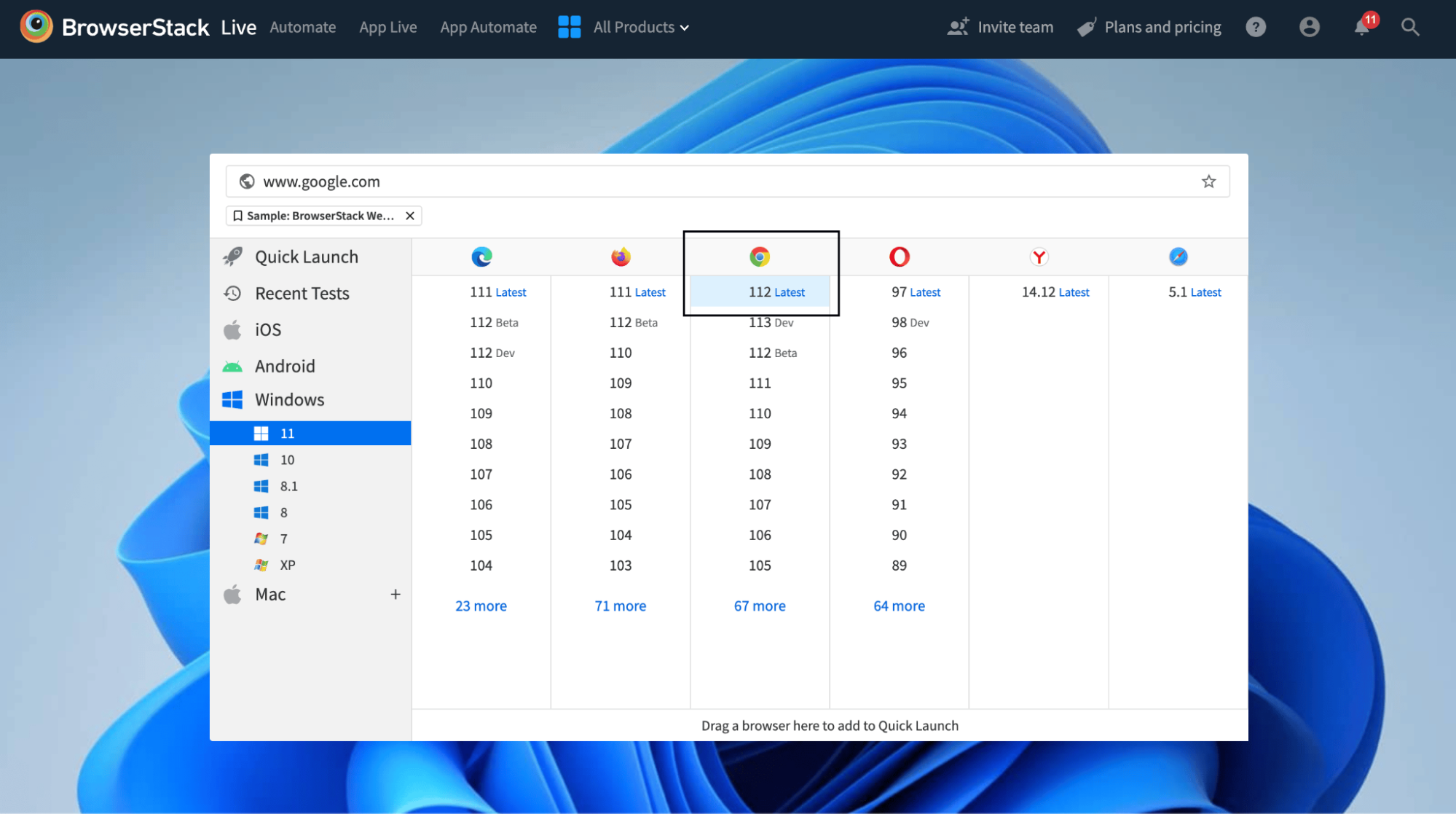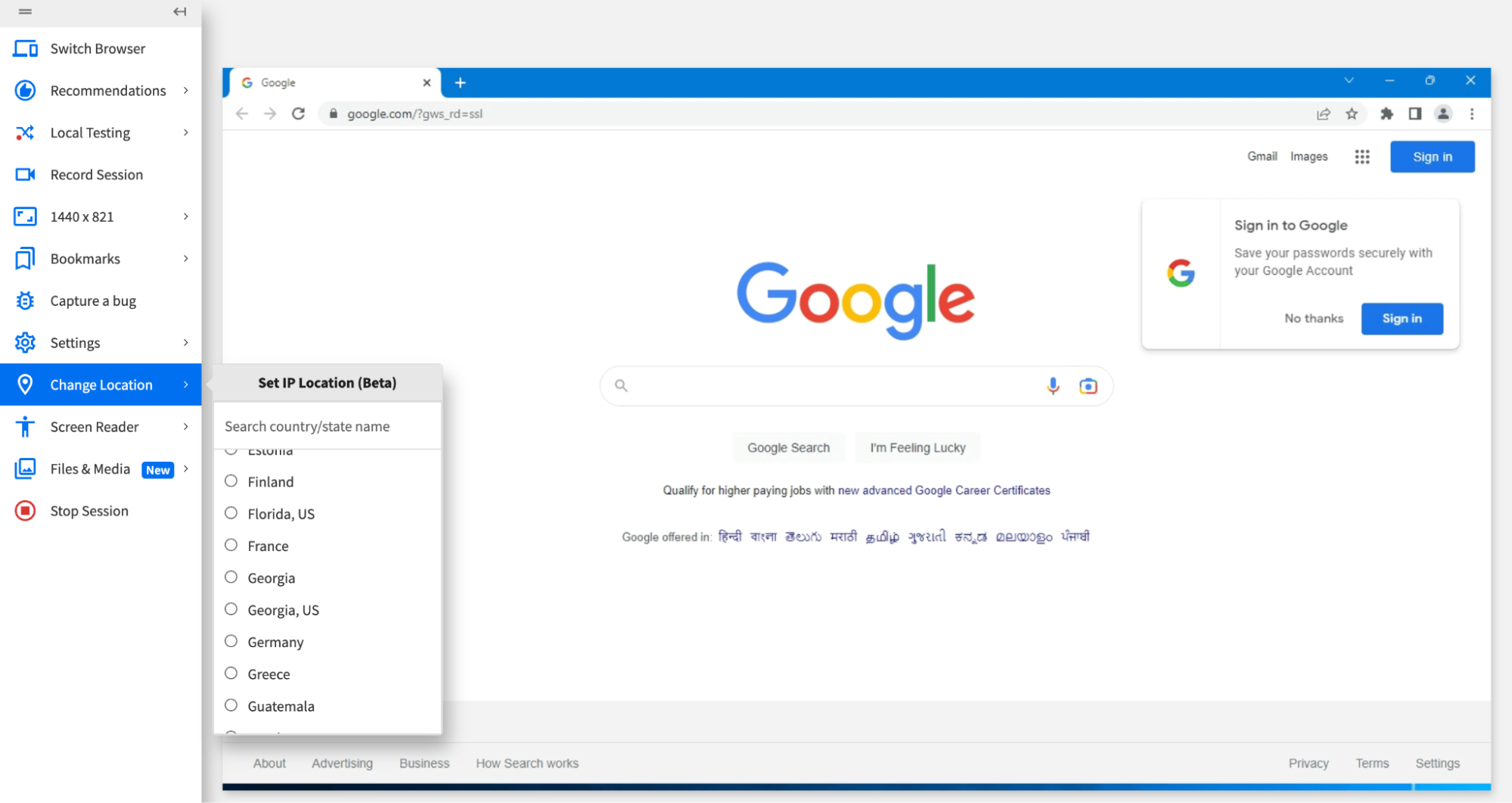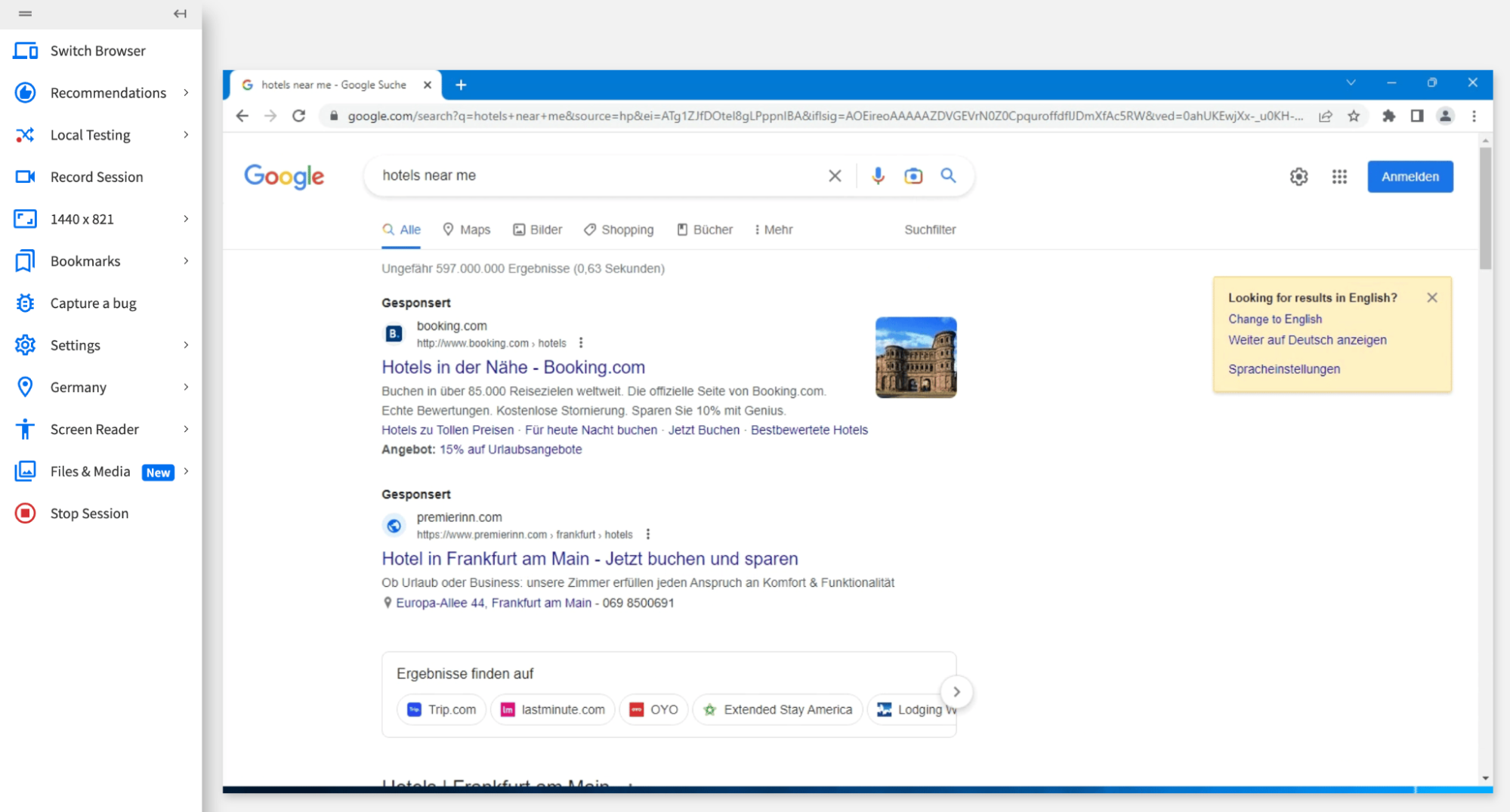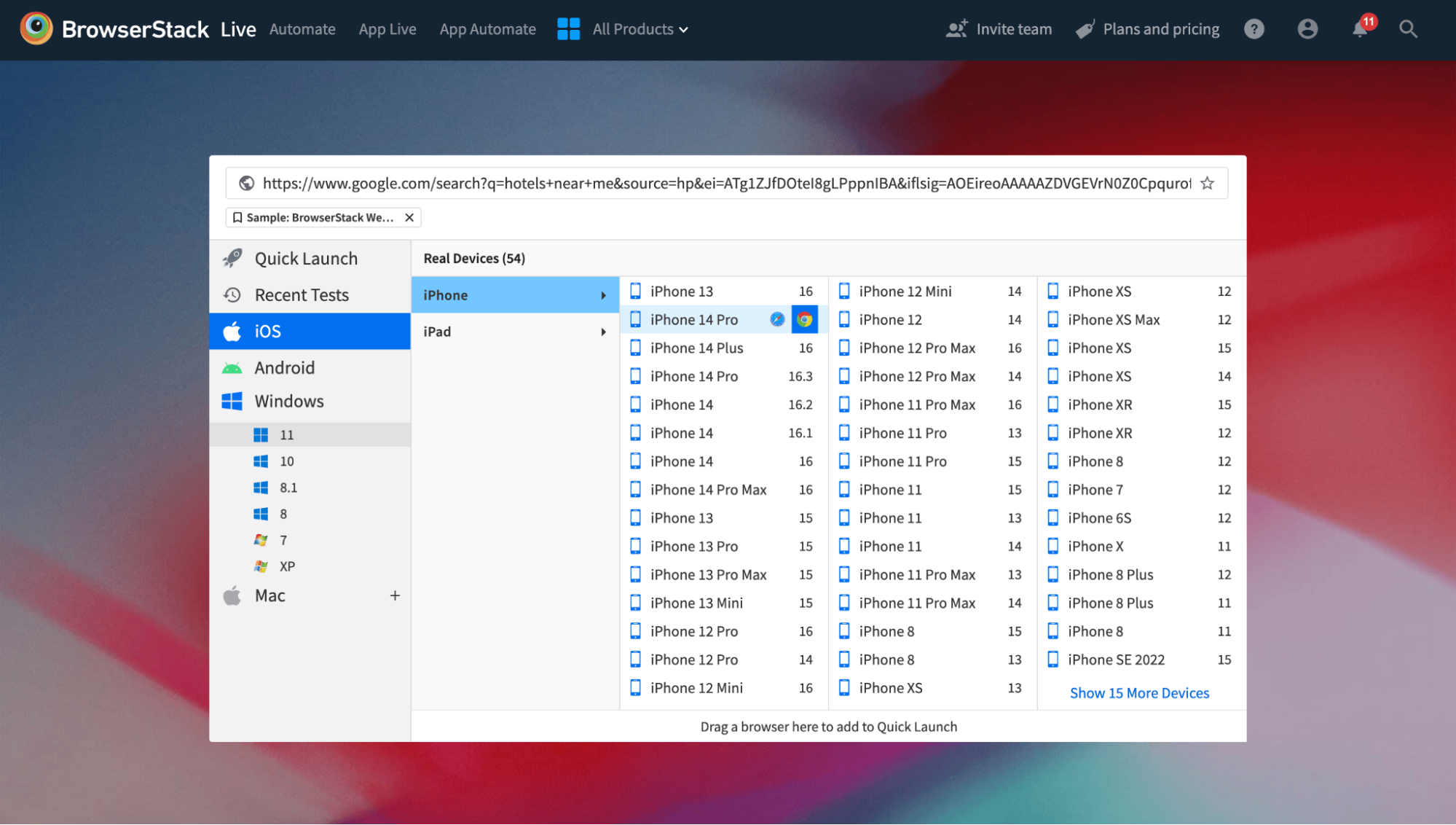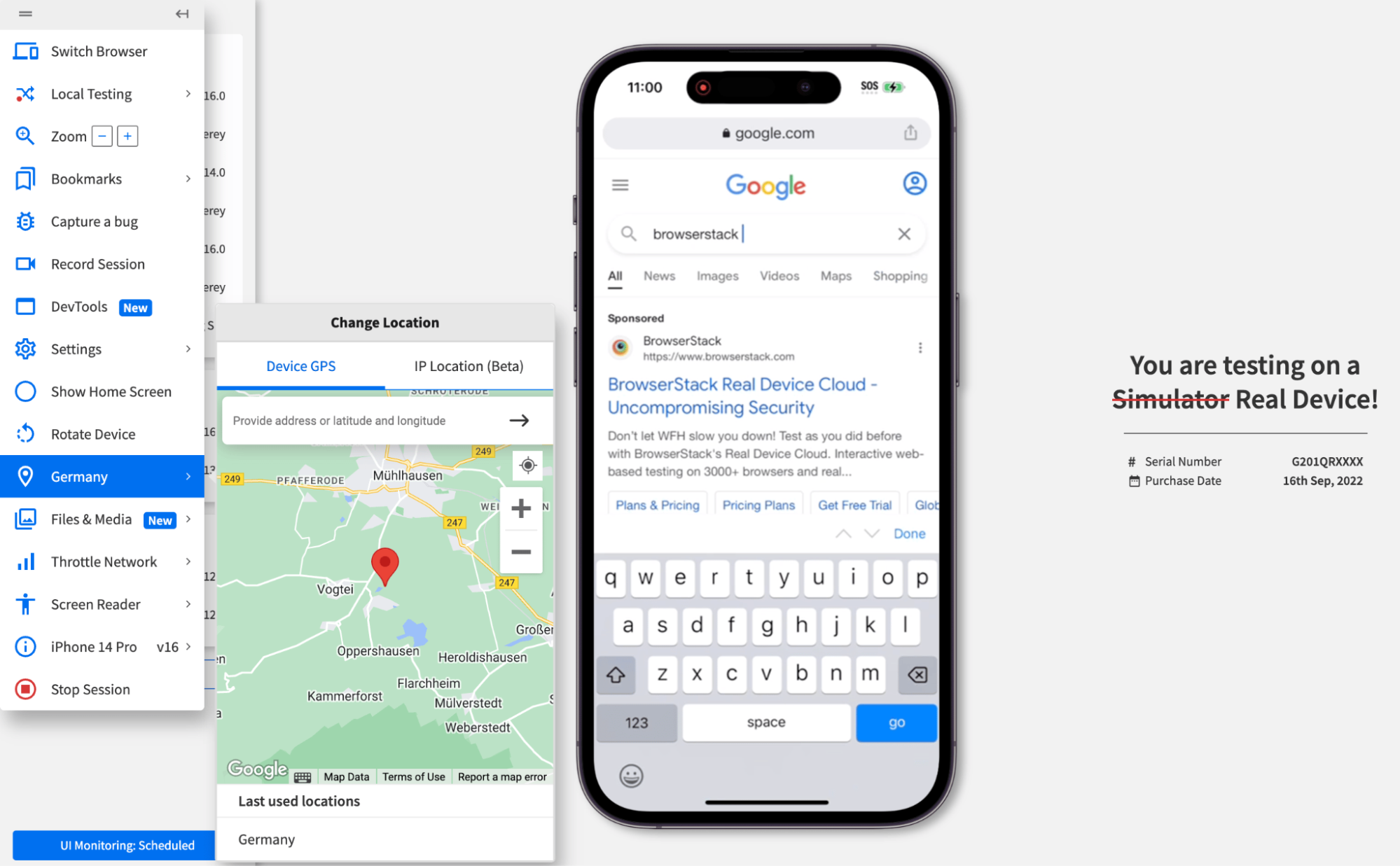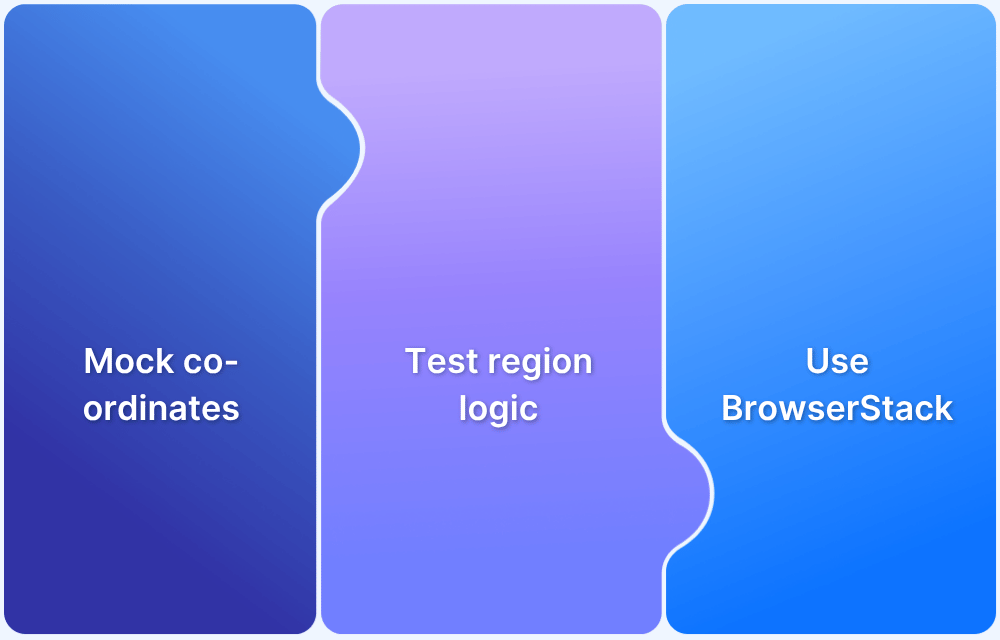How to check website availability from multiple locations
By Vivek Mannotra, Community Contributor - November 29, 2024
As the world economy has become more globalized, companies are increasingly looking to expand their operations into new markets. One of the challenges they face is ensuring that their products are available across borders and time zones.
This is true for software companies whose products may be used by people in different parts of the world. They want to reach as many potential customers as possible by making their products available consistently.

- What is Website Availability?
- Why Test Website Availability from Different Locations?
- Uptime vs Downtime
- Importance of Website Availability
- Factors affecting Website Availability
- Understanding Website Availability Metrics
- Uptime Percentage
- Response Time
- Load Time
- Error Rates
What is Website Availability?
Website availability refers to the ability of a website to be accessed and used by visitors at any given time. It is a critical metric for online services, indicating whether a website is operational and accessible.
High availability ensures seamless user experiences and minimal interruptions, often measured as a percentage of uptime over a specific period.
Why Test Website Availability from Different Locations?
Testing website availability from different locations is crucial to ensure a consistent and reliable user experience globally.
A website may appear accessible and functional from one geographic region but encounter issues in others due to factors like network routing, regional restrictions, or server performance. Below are the key reasons to conduct location-based availability tests:
- Ensure Global Accessibility: Maintain a consistent user experience for international audiences.
- Monitor Localized Content: Verify that region-specific languages, currencies, and content load correctly.
- Identify Regional Connectivity Issues: Detect network, ISP, or routing problems affecting specific regions.
- Verify CDN Performance: Ensure content is properly served from CDN nodes across the globe.
- Compliance with Regional Regulations: Confirm access and adherence to local internet laws (for example, GDPR, firewalls).
- Detect Geo-Specific Downtime: Identify outages affecting specific servers or regions.
- Test Global Load Balancing: Ensure traffic is distributed effectively among regional servers.
- Improve Customer Satisfaction: Prevent regional accessibility issues that can frustrate users.
Uptime vs Downtime
- Uptime: The amount of time a website is fully functional and accessible to users. It’s typically expressed as a percentage (for example, 99.9% uptime) and reflects reliability.
- Downtime: The period when a website is unavailable due to issues like server crashes, network failures, or maintenance. Reducing downtime is crucial to avoid revenue loss, poor user experiences, and negative brand impact.
Importance of Website Availability
Before the advent of cloud technologies, web server technology has been the most critical factor in deciding the availability of the website.
The nature of the tech business is such that there is fierce competition between companies when it comes to user acquisition and retention. In order to stay ahead, product availability is essential for software companies because it allows them to:
- Ensure stability: To run a stable business it is important you have mechanisms in place which routinely check whether an application is functioning appropriately in all user environments.
- Increase customer base: By making products available in different geographies, software companies can reach new customers who may be interested in using their products.
- Stay ahead of the competition: In today’s market, it is important for software companies to ensure that their products are available for all users at all times. Failure to ensure this could lead to disadvantages in a competitive environment.
- Increase their revenues: Product availability can also lead to increased revenues for software companies. This is because they will be able to sell their products in more places and to more people.
- Achieve scale: Tech companies have been able to achieve the scale that is unprecedented in the traditional industry because of the technology and prevalence of devices connected to the internet. For aspiring companies to reach such scale, they have to ensure availability across the globe.
The term website availability refers to the percentage of time that a website is accessible to users. In order to ensure website availability in different locations across the globe, various factors need to be considered.
Most companies aspire to have close to 100% availability for their websites and mobile apps, but only some can maintain that with a varying user load and increasing cost of computing.
It is common to see products facing issues when scaling beyond the traditional environments and entering new geographies.
Factors affecting Website Availability
The following is a list of various variables that can affect website availability:
- Distance from server: The further away a user is from the server, the longer it will take for the website to load. This is due to the fact that data has to travel further and thus takes longer.
- Bandwidth: The amount of bandwidth available to your computational resources can also affect website availability. If there is not enough bandwidth, then the website will not be able to load properly.
- Number of users: If there are too many users trying to access the website at the same time, then it can slow down the website or even cause it to crash.
- Internet connection: A poor internet connection can also affect website availability if it is not optimized for such conditions. If the connection is too slow, then the website will not be able to load properly.
- Downtime: Downtime is when a website is unavailable due to technical difficulties. This can be caused by anything like server issues, dependency failure, coding errors, etc.
- Different Devices: Different countries may have different mobile device manufacturers which means application compatibility might have to be tested on a foreign device manufacturer platform.
- Regulatory environment: Internet traffic and content could be subject to moderation or throttling in different geographies based on the working style of the ruling establishment.
Keeping in mind all these factors let’s now discuss how you can develop and integrate testing methodology for ensuring website availability.
BrowserStack offers over 3500+ devices, browsers and OS combinations. You can seamlessly test your website from different locations. It also allows you to test your website on different network conditions.
Understanding Website Availability Metrics
Monitoring key website availability metrics ensures a website’s performance, reliability, and user satisfaction.
Below are detailed explanations of some of the core metrics:
Uptime Percentage
Uptime percentage measures the proportion of time a website is operational and accessible to users. It is typically expressed as a percentage over a given period.
High uptime ensures minimal disruptions, signaling a reliable and robust web presence.
For example, an uptime of 99.9% allows for about 43 minutes of downtime per month, while 99.99% limits downtime to roughly 4 minutes. This metric is critical for businesses, as prolonged downtime can harm user trust, revenue, and reputation.
Response Time
Response time refers to the duration a server takes to respond to a user’s request.
It is an important indicator of a website’s performance and is directly tied to user experience. Faster response times reduce delays and keep visitors engaged, with an ideal range being under 200 milliseconds.
Slow response times can affect users and lead to higher bounce rates. It is important, especially in competitive industries like e-commerce.
Load Time
Load time is the total time required for a webpage to fully load and become interactive.
Ideally, load times should fall between 2-3 seconds to prevent user drop-offs and improve conversion rates. Slow loading websites not only degrade user experience but also negatively impact search engine rankings, as speed is a crucial factor in SEO algorithms.
Error Rates
Error rates measure the percentage of failed requests encountered by users when attempting to access a website.
Common errors include HTTP status codes like 404 (not found) and 500 (server error). High error rates indicate underlying issues such as broken links, server overload, or coding problems.
Maintaining a low error rate, ideally close to 0%, is essential to ensure a good user experience and to avoid damaging a website’s reputation.
Difference Between Availability and Other Types of Testing
Some people might confuse themselves with justification for availability testing. During automated regression testing also the website is being accessed which as a result also gives a report on the availability. But this is not the same as availability testing.
The biggest difference between regression testing and availability testing is the fact that regression testing involves running a large number of tests on a relatively smaller number of test environments whereas in the case of availability testing the number of tests run is not large but the number of test environments on which the tests or run is wider depending on the needs of the business. Globalization testing and availability testing are sometimes integrated because of similarities in the nature of the tests.
Using tools like BrowserStack allows you to easily perform these tests easily. You can access the website from different locations to test how the website performs across different geographies.
Methods for Checking Website Availability
The following methods provide a comprehensive approach to monitoring and verifying website availability.
1. Manual Checks
- Directly access the website through a browser to verify if it loads properly.
- Use command-line tools like ping, tracert (Windows), or traceroute (Linux/Mac) to check server connectivity.
- Perform DNS resolution tests using tools such as nslookup or dig.
- Access the site from different devices and networks to rule out localized issues.
2. Automated Tools
- Utilize uptime monitoring platforms like Pingdom, UptimeRobot, and Site24x7 for real-time notifications.
- Make use of testing platforms like BrowserStack to test websites across various locations through features like IP Geolocation Simulation.
- Implement synthetic testing tools such as Selenium or Puppeteer to simulate user interactions and assess availability.
- Deploy server health monitoring tools like Datadog or New Relic to track system performance.
3. Browser Developer Tools
- Inspect the Network tab for failed requests, slow responses, or HTTP error codes.
- Monitor the Console tab for JavaScript errors or other issues affecting the website’s functionality.
- Use the Performance tab to analyze load times and identify potential bottlenecks.
- Clear the cache and perform tests to ensure accurate results.
4. API and Backend Checks
- Test API endpoints using tools like Postman or curl to confirm they respond correctly.
- Check database connectivity to ensure backend data is accessible and functional.
- Analyze server and application logs for errors or unusual behavior.
- Verify server health using tools such as HTOP or server-specific dashboards.
5. Self-Hosted Monitoring Solutions
- Write custom scripts in Python or Bash to check website uptime and send alerts.
- Set up a monitoring stack with tools like Prometheus and Grafana for advanced metrics and visualization.
- Use self-hosted solutions like Nagios, Zabbix, or Elastic Heartbeat to monitor uptime and performance.
How to Test Websites for Availability
Testing websites for availability involves the following steps:
Step 1: The first step is to lay down a matrix of test environment variables and their various permutations upon which a sequence of test activity will be executed. It is best to consider businesses’ goals when selecting test environments to get the most realistic comparison.
- What locations are important for the functioning of your website
- What is the most representative set of device platforms on which it will be used?
- What are the network conditions for an average user visiting?
Step 2: After defining test environments, you can work to establish the kind of tests you want to perform in order to ensure the availability of your website.
Step 3: Choose testing tools like BrowserStack (Live, Automate, App Live, App Automate). These tools simplify this process by providing real-device testing, IP geolocation simulation, GPS geolocatio, and cross-browser compatibility testing on a cloud-based platform.
Step 4: Decide Test Frequency
Determine test frequency based on your continuous testing workflow or as a parallel activity, guided by the development team’s experience.
Step 5: Ensure Effective Reporting
Focus on proper reporting for both manual and automated tests, as all analysis depends on the quality of the gathered reports.
Step 6: Build Reporting and Debugging Strategies
Develop a robust reporting structure, debugging plan, and future strategies based on insights from the reports. Use tools like BrowserStack Test Observability for advanced test insights and automated reporting.
Best Practices for Website Availability Across Multiple Locations
Maintaining high website availability across multiple locations is essential for serving a global audience efficiently.
The following best practices ensure optimal performance and minimal downtime for geographically distributed users:
1. Deploy Multi-Region Infrastructure: Set up data centers or cloud regions in multiple geographic locations to reduce latency and improve redundancy. Cloud providers like AWS, Azure, or Google Cloud can be used to distribute resources globally.
2. Use a Global Load Balancer: Implement a global load balancer to direct traffic to the nearest or most available server. This ensures efficient resource utilization and minimizes latency for users in different regions.
3. Leverage Content Delivery Networks (CDNs): Distribute static and cached content using CDNs like Cloudflare or Akamai. CDNs serve content from edge servers closest to users, improving load times and availability.
4. Optimize DNS Resolution: Use geo-based DNS routing to direct users to the closest server location. Solutions like AWS Route 53 or Cloudflare DNS can dynamically route traffic based on geographic proximity.
5. Monitor Regional Performance: Set up monitoring tools like Datadog, Pingdom, or Site24x7 to track uptime and performance for each location. Use synthetic monitoring to simulate user behavior from various regions.
6. Implement Autoscaling: Enable autoscaling to handle regional traffic spikes by automatically adding or removing resources. This prevents outages caused by unexpected demand in specific locations.
7. Conduct Disaster Recovery Testing: Test failover systems regularly to ensure traffic can be rerouted to other regions during outages. Maintain backups and recovery plans for each geographic site.
8. Regularly Test Across Locations: Perform regular availability and performance testing from different geographic regions. Tools like Selenium Grid or BrowserStack allow testing across various devices and locations.
9. Minimize Downtime During Updates: Use rolling updates and blue-green deployment strategies to update servers in phases, ensuring uninterrupted service across locations.
10. Address Regional Compliance Requirements: Ensure compliance with local regulations like GDPR (Europe) or CCPA (California) that may impact website accessibility and user data handling.
Read More: How to Enable Location Permission in Chrome
Troubleshooting Website Availability Issues
Addressing website availability issues promptly is essential to minimize downtime and restore normal operations. The following steps can help you troubleshoot and resolve these issues effectively:
1. Verify the Root Cause of the Problem
Check server health to ensure it is operational and not overloaded. Examine network connectivity using tools like ping or traceroute to identify network issues.
Review logs to pinpoint errors or warnings. Test APIs and databases to ensure backend systems are functioning as expected. Identify recent changes, such as deployments or updates, that might have caused the issue.
2. Using Status Pages for Communication
Keep users informed through public status pages about the current status, known issues, and estimated resolution times.
Regularly update the status page with progress to keep stakeholders informed. Be transparent about the issue and its impact on maintaining user trust.
3. Plan for Prevention
After resolving the issue, analysis will be conducted to identify preventive measures. Implement monitoring tools to track uptime, performance, and errors in real time. Enhance redundancy with failover systems, load balancing, and multi-region setups. Regularly update software to reduce vulnerabilities. Perform stress tests to identify and fix potential bottlenecks.
By verifying the root cause, maintaining transparent communication, and implementing preventive measures, businesses can effectively address and minimize website availability issues.
How can BrowserStack test a Website from Different Locations?
Follow these steps to test websites from different countries effectively using BrowserStack:
Step 1: Sign Up or Log In to BrowserStack
Create an account on BrowserStack or log in if you already have one.
Step 2: Navigate to the Live Dashboard
After logging in, go to the BrowserStack Live Dashboard.
Step 3: Select the Desired OS-Browser Combination
Choose the operating system (OS) and browser combination you wish to test. For instance, select Windows 11 with Chrome 112.
Step 4: Start a Testing Session
After selecting the OS-browser combination, a session will initiate on a real device.
Step 5: Change the Location
Access the Change Location option from the floating toolbox. Enter the desired country or region for geolocation testing (for example, Germany).
Step 6: Verify Geolocation Behavior
Initially, the location is set to “None,” meaning search results won’t be localized. After setting the location to a specific country (for example, Germany), the session refreshes, showing localized content such as search results or website behavior tailored to the specified region.
Step 7: Perform Localized Testing
Conduct location-specific tests by searching queries like “hotels near me.” Verify the results, ensuring they align with local content and behavior, such as geofencing, geotargeting, geotagging, or geoblocking.
Step 8: Test on Real Mobile Devices
For mobile testing, select the desired platform (Android or iOS) and a specific device, such as iPhone 14 Pro with iOS 16 or Google Pixel, from the Live Dashboard.
Step 9: Simulate Geolocation on Mobile Devices.
Manipulate the device’s GPS and use the IP Location feature (Beta) to simulate user behavior in 45+ countries. This helps test the website’s functionality and responsiveness from various global locations.
Why Choose BrowserStack to Test Websites Across Different Locations?
BrowserStack is a powerful tool for testing websites from different locations because it offers:
- Real Device Testing: Replicates user conditions across locations, devices, and browsers.
- Global IP Geolocation: Simulates region-specific interactions with location-based IPs.
- Cross Browser Testing: Ensures consistent performance across browser versions and locations.
- No Setup Required: A cloud-based platform eliminates the need for VPNs or proxy configurations.
Read More: How to Perform Geolocation Testing on Chrome
Conclusion
Testing websites across various locations ensures a seamless and localized user experience for global audiences. BrowserStack simplifies this process by providing real-device cloud, IP geolocation simulation, GPS geolocation simulation, and cross-browser compatibility checks, all on a cloud-based platform.
With no need for complex setups like VPNs or proxies, BrowserStack allows teams to efficiently simulate user interactions from 45+ countries and gain actionable insights.



